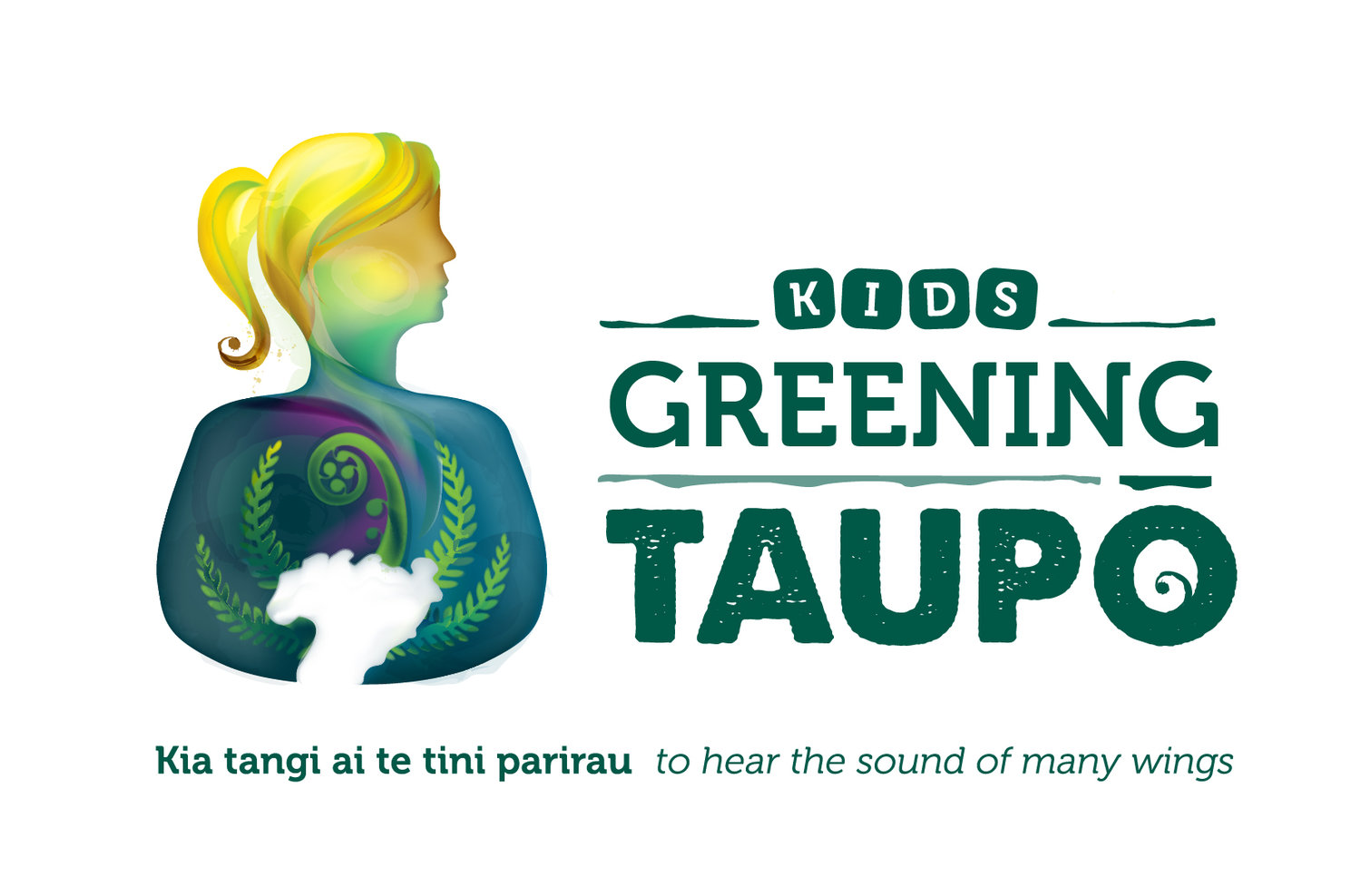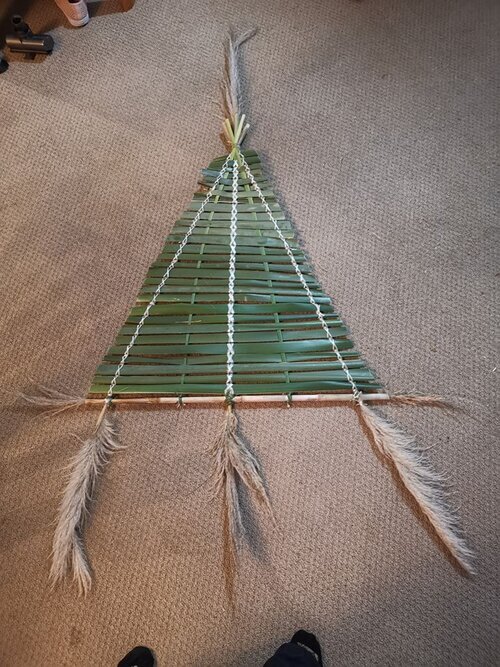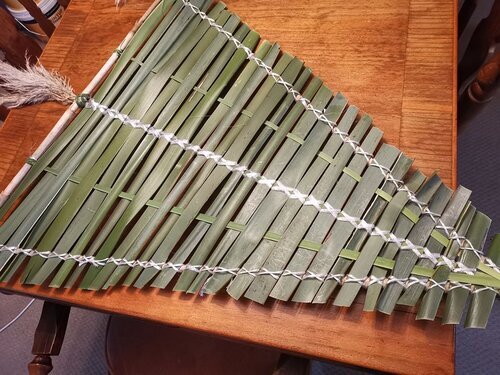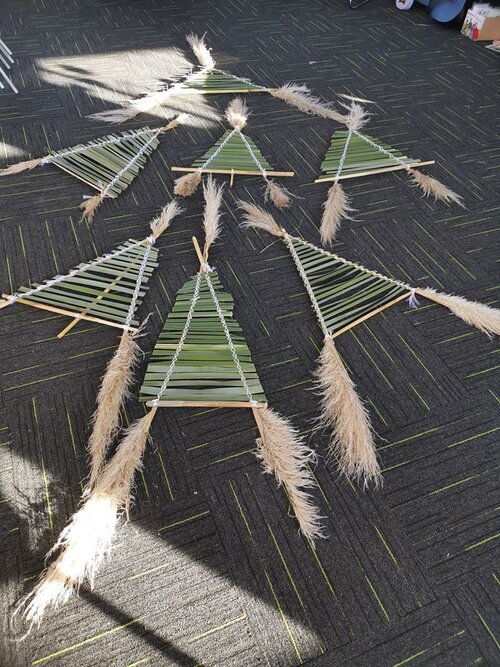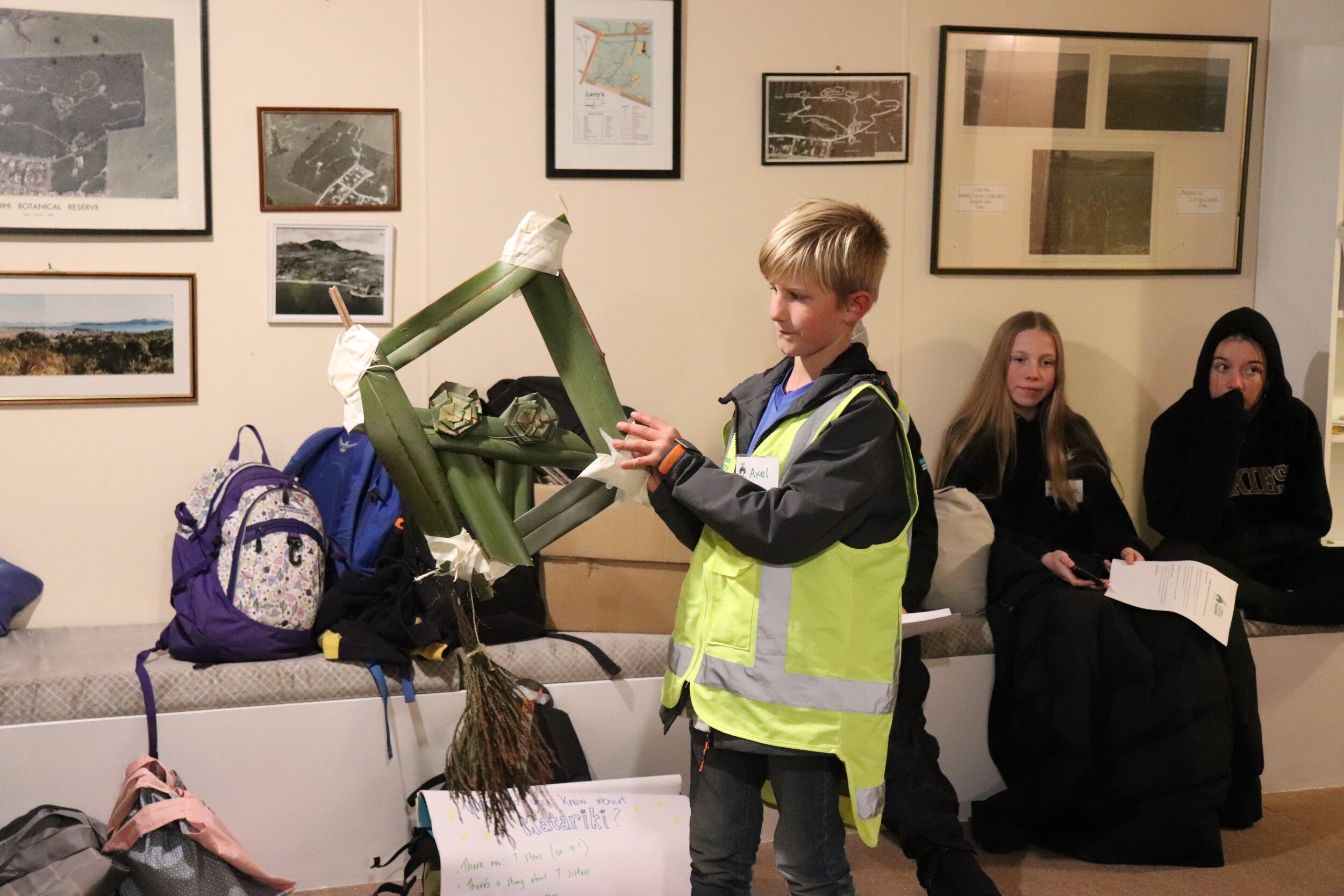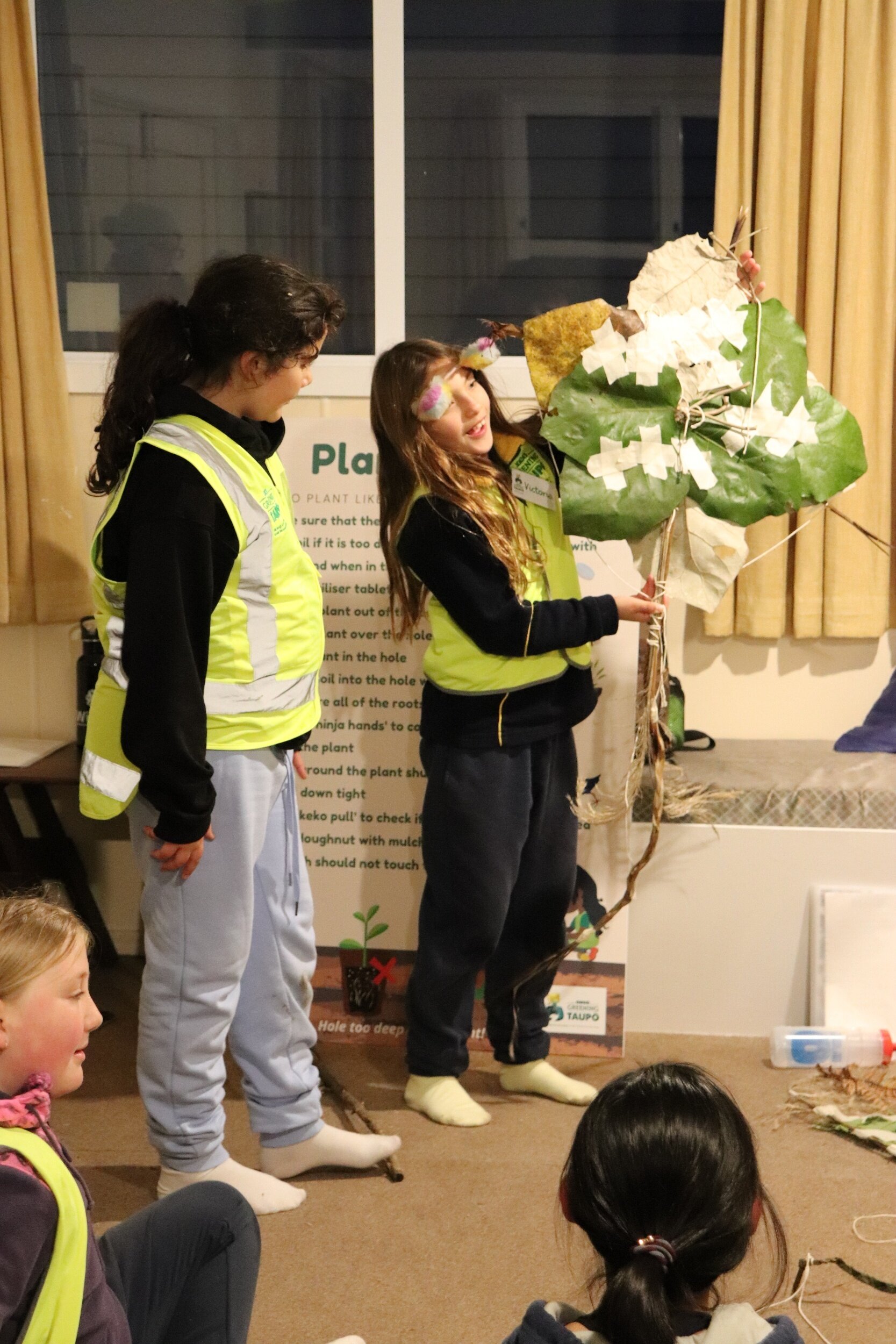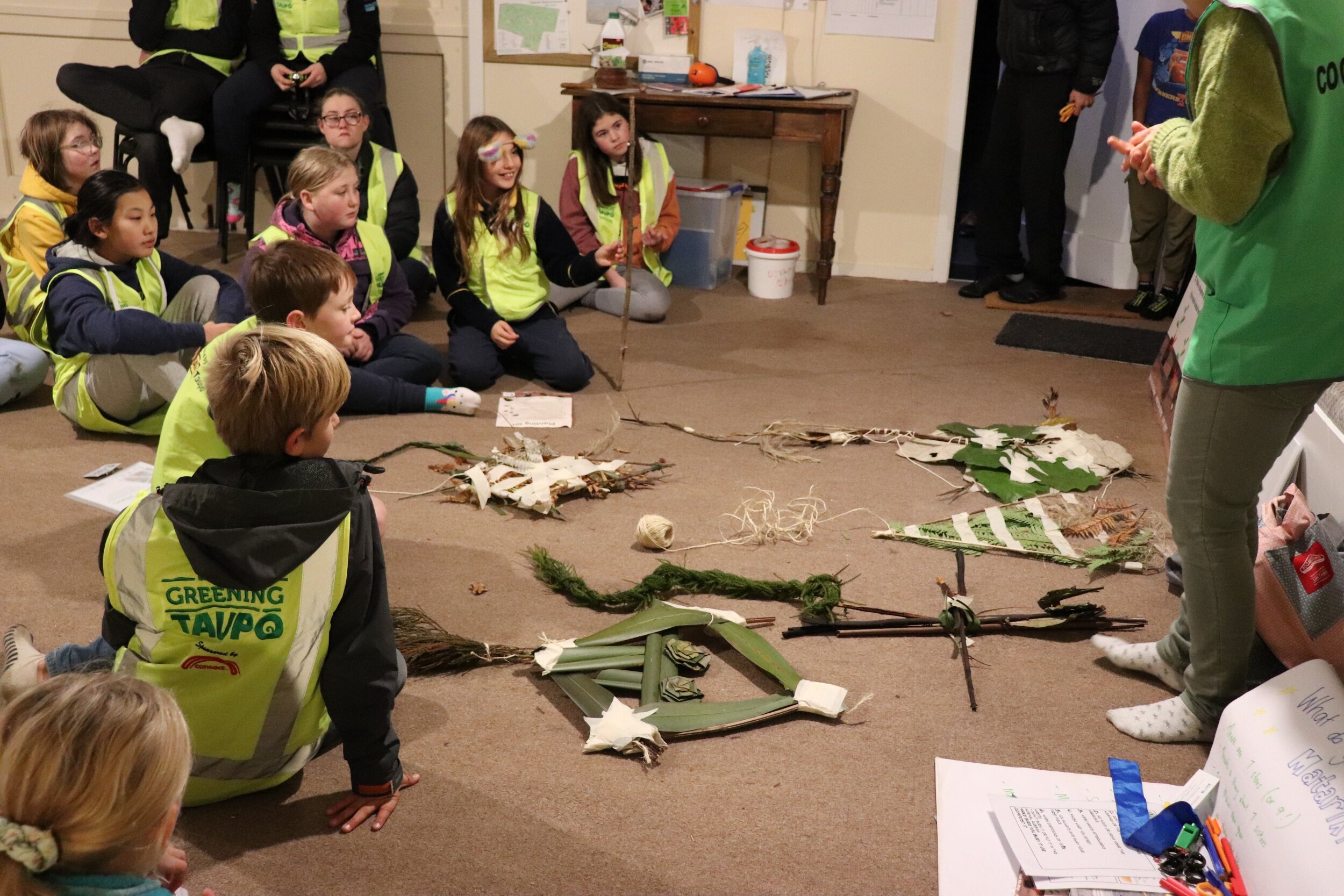Matariki
Nau Mai! Welcome to the Kids Greening Taupo Online Nature Classroom!
This Online Nature Classroom is all about Matariki
Te Reo with English subtitles- A Matariki story
What is Matariki?
Matariki is a cluster (group) of stars that set during May/June, and rise during June/July annually. The rising of the Matariki star cluster signifies the Māori new year, a time to celebrate new lives, and those who have passed on, with kai (food), waiata (song), and haka (dance), a time for reflection, planning, and coming together as a whānau. Māori tūpuna (ancestors) look to Matariki to time preservation of crops for winter, and to predict the success of the coming year’s harvest.
During Matariki rising, nine stars (from the Matariki star cluster) can be seen from Earth just before dawn without a telescope.
Te Iwa o Matariki are:
Matariki – signifies reflection, hope and our connection to the environment
Pōhutukawa – connects with those who have passed on
Waitī – ties to bodies of fresh water and the food within it
Waitā – ties to the ocean and the food within it
Waipuna-ā-rangi – associated with the rain
Tupuānuku – is for food that grows within the soil
Tupuārangi – is for food that grows up in the trees
Ururangi – is the star associated with the winds
Hiwa-i-te-rangi – the youngest, is the wishing star that also ties into our aspirations for the coming year
Sourced from- The Spinoff, Matariki: about the Māori New Year and how to celebrate it (2019).
Video HERE.
Deeper Learning about Matariki
Why is Matariki celebrated in the ‘middle months’ of the year?
Globally, most indigenous (native, naturally occurring in that country) cultures follow Maramataka- a lunar/moon cycle based calendar. Maramataka calendars differ throughout the world depending on the iwi/hapu following it. Maramataka uses many different parts of te taiao (the environment) to determine seasons, months, and activities. These environmental observations include sun/solar cycles- determines seasons, star/stellar cycles- determines months, and moon/lunar cycles- together with other environmental signs- determines activities.
When Europeans colonised (took over) Aotearoa, a completely different calendar was introduced, the Gregorian calendar. The Gregorian calendar is the 7 days a week, 365 days a year calendar. It is a solar calendar (based off the sun).
The lunar calendar is a different length (354 days per year) to the solar calendar (365 days per year). This is why Matariki is celebrated during what is often considered ‘the middle months’ of the year under the Gregorian calendar, and also the reason Matariki rises at different times each year. Find out more about Maramataka and Gregorian calendar differences HERE and the use of a 13th month.
Matariki rises during the lunar phase Tangaroa, three to four days before a new moon cycle. Different iwi may celebrate Matariki at different times, and in different ways, depending on the local traditions. Some iwi celebrate upon the stars rising, other iwi may celebrate at the first full moon, or new moon after Matariki rising. Some iwi look for Puanga/Puaka instead of Matariki to signal their new year. This occurs earlier than Matariki.
Matariki stars introduction video (Te reo with english subtitles)
Resources for teachers:
Te Reo Matariki poster:
Matariki free activity book from Te Papa Museum:
Our ‘Fill your Kete’ section will provide you with some fun nature activities based around our topic. As this unit’s theme is Matariki, the activities include stargazing, Matariki skits/plays, nature whētu art, and making manu tukuku.
Stargazing and Waiata
Go outside and enjoy looking at the stars in the night sky!
If it is the right time of year, you might spot the Matariki star cluster. Click HERE to learn about the stars of Matariki and when to observe them. Watch THIS video to learn more about the Matariki cluster, and how to spot it.
Learn the Matariki star names through waiata and actions HERE.
Even if you can’t spot Matariki, you can still enjoy the night sky. Think about how full the moon is. Can you spot a shooting star or a satellite? See if you can identify the constellations in the night sky.
A wonderful app to use is SkyView:
For more activities to explore the night sky visit this DOC learning from home page.
If you want to explore more in the dark, check out our Nature Connector Nocturnal Adventures for more ideas.
Matariki skit/play
It’s time for you to to retell the story of Matariki and share it as a skit/play with your whānau and friends.
Find the script and characters HERE. Words and illustrations are by the author of ‘The Little Kiwi's Matariki’- Nikki Slade Robinson.
If you need any help picturing the characters in this skit, watch the video read aloud of ‘The Little Kiwi's Matariki’ below.
Curiosity Questions
Our Māori tupuna, looked to the stars to help guide their journeys. They were master navigators, and crossed the seas in waka (canoes). During winter, Māori looked to Matariki to predict what kind of weather the next season would bring. If the stars shone bright, it meant the season ahead would be a good one. If they were dull, it meant there would be hard work ahead to be able to provide enough food for their whanau.
Investigate the importance of stars in early navigation. How has navigation changed since Māori first arrived in Aotearoa? How did Polynesian people use the stars to navigate? How did this method of navigation compare with explorers from other parts of the world?
This amazing resource has a series of videos, designed to take you on a virtual tour of navigation in New Zealand. You might find some of the answers to these questions in the video series. Here are more resources that might help you to answer these questions.
Whetū Art
Go for a walk and connect with nature while thinking about Matariki. The connection with the natural world, the seasons, plants, and of course, stars, are important aspects of Matariki. Collect natural resources and celebrate Matariki by creating whetū (stars) in the natural environment. You could make stars with autumn leaves, sticks or dandelions. Be creative! Breathe fresh air and think about all the great things Papatūānuku provides us with. Your art will be beautiful, but being natural and biodegradable, it will once again become part of our earth It will be food for bugs and fungi, then become part of the soil. There is no waste in nature!
If you have harakeke (flax) growing near you, you might like to make a star from it. Watch the video below for instructions on how to do this.
Find out more about the individual Matariki stars HERE.
KI TE PANUI/ TO READ
This ki te Panui section is based on Matariki.
Head to the section below for the read aloud story, The Seven Kites of Matariki.
If you already have this book make sure you head outside to connect to nature whilst enjoying it!
After reading/listening to the book make sure to try the follow up manu tukutuku activity.
In each Online Nature Classroom we will give book suggestions along with at least one video read aloud.
This recommendation is The Seven Kites of Matariki.
Watch the read along below-
Follow up activity:
Make a manu tukutuku
Manu means both bird and kite, tukutuku refers to winding out the line. Kites were flown to celebrate the start of the Māori New Year, when Matariki (the Pleiades) appeared in the mid-winter night sky.
You can make your own manu tukutuku using natural resources from your backyard. You could use sticks, toetoe, harakeke, feathers or leaves. Be creative! For a less traditional version, you could make your frame from sticks and then glue paper to these if you need to. You can then decorate it with feathers and leaves. However you make your kite, getting outside in the fresh air and winter wind to try it out will make you feel fantastic!
See more information about manu tukutuku and instructions for how to make one HERE
Watch the videos below to see step by step instructions to make manu tukutuku and to learn more about them.
Check out these awesome manu tukutuku made for Matariki by the bilingual Māori students at Te Papapa School. They used toetoe and harakeke, with string to bind them. We think they are very clever and did a fantastic job!
Below are some photos of our junior Student Leadership Team’s Manu Tukutuku:
OTHER BOOK SUGGESTIONS (matariki):
Peer-reviewed by several local experts in Mātauranga Māori.
